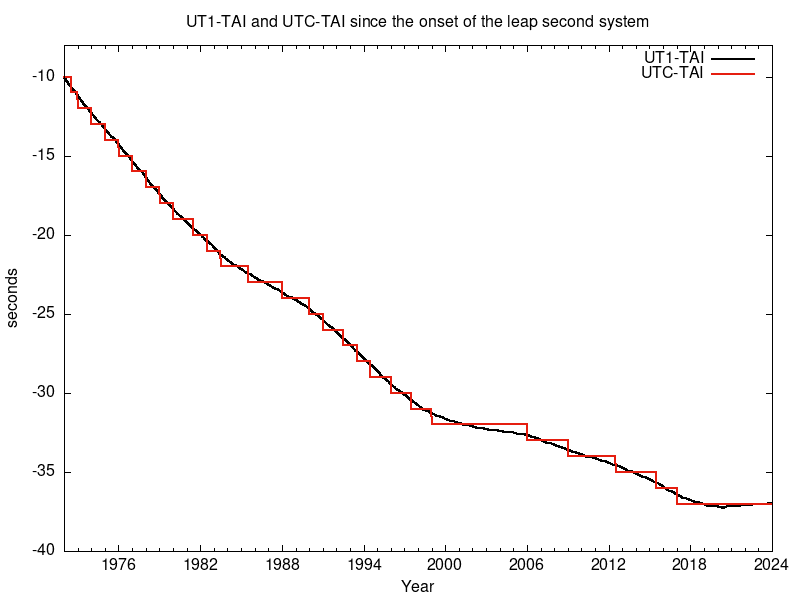
| THE LEAP SECOND |
| When should we introduce Leap second in UTC ? On 30 June 2012, the last minute of the day has lasted 61 seconds. Why ? leap second : see last last Bulletin C [ TAI - UTC ] [ Offsets of UTC] [Bulletin C] [UTC] |
|
The Coordinated
Universal Time (UTC, replacing GMT) is the reference time scale derived
from The Temps Atomique International (TAI) calculated by the Bureau International
des Poids et Mesures (BIPM) using a worldwide network of atomic clocks. UTC differs
from TAI by an integer number of seconds; it is the basis of all activities in
the world.
UT1
is the time scale based on the observation of the Earth's rotation. It is now
derived from Very Long Baseline Interferometry (VLBI). The various irregular
fluctuations progressively detected in the rotation rate of the Earth lead in
1972 to the replacement of UT1 as the reference time scale . However, it was
desired by the scientific community to maintain the difference UT1-UTC smaller
than 0.9 second to ensure agreement between the physical and astronomical time
scales.
|
